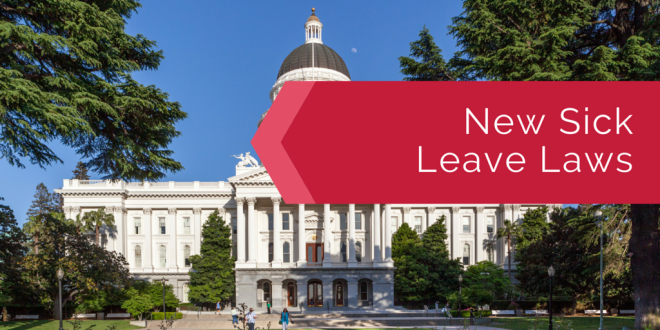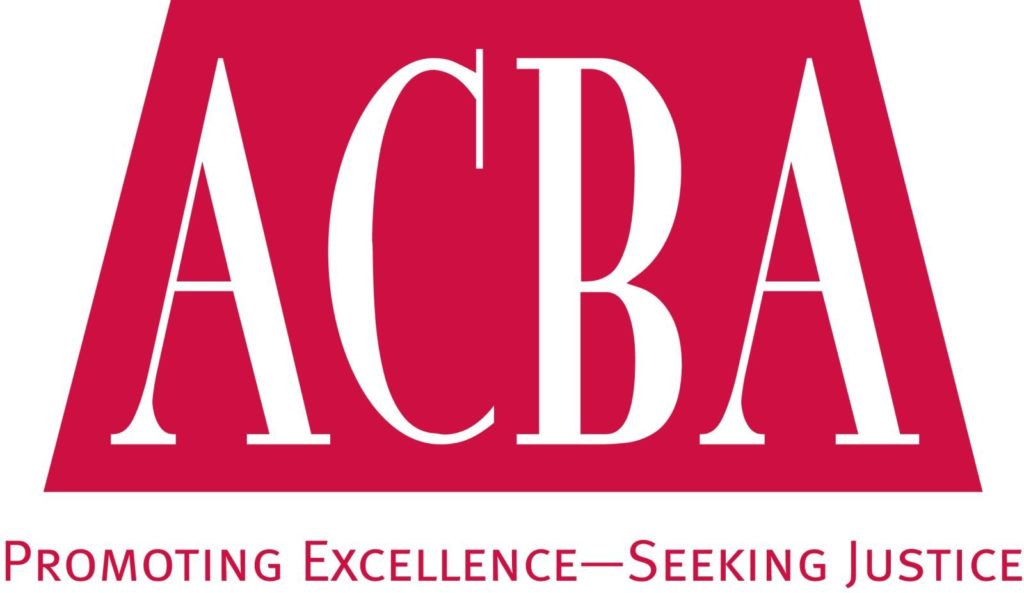
California’s employment law landscape is constantly shifting. On or after July 1, 2015, all California employers regardless of size must provide their California employees with at least 3 days (24 hours) of paid sick leave per year for:
- the diagnosis, care, or treatment of an existing health condition of
- an employee or
- an employee’s family member
- victims of domestic violence, sexual assault, or stalking to obtain
- court orders,
- medical attention,
- access to a domestic violence shelter,
- counseling, or
- temporary or permanent housing.
Exceptions
- If a collective bargaining agreement provides for sick leave the law may not apply.
- Home care attendants and flight deck and cabin crew may be exempted if they receive equivalent benefits.
- If your PTO policies or sick leave policies provide equivalent benefits the law need not apply.
These policies should be reviewed now for compliance purposes.
Who is a “Family Member?”
- A biological child, adopted, or foster child, stepchild, legal ward, or a child to whom the employee stands in loco parentis (place of a parent, i.e. school teachers) regardless of age or dependency status.
- A biological, adoptive, or foster parent, stepparent, or legal guardian of an employee or the employee’s spouse or registered domestic partner, or a person who stood in loco parentis when the employee was a minor child.
- A spouse, registered domestic partner, grandparent, grandchild or sibling.
Qualifications
The employee must work more than 30 days within a year of the commencement of employment or within a year of July 1, 2015, whichever is later. The employee can earn up to 24 hours of paid sick leave in a calendar year at the rate of one hour per every 30 hours worked. If the employee is an exempt employee he or she accrues sick days based on the their normal weekly work schedule or 40 hours per week, whichever is less. An employer can limit the use of paid sick days to 24 hours or three days in each year of employment.
When can the employee take paid sick leave?
An employee can use accrued paid sick days after 90 days of employment. Accrued paid sick days carry over to the following year of employment. However, the employer can impose a maximum cap of 48 hours or 6 days until sick leave is used.
Does the employer have to pay accrued out sick leave when the employee leaves?
An employer is not required to pay an employee for accrued, unused paid sick days upon separation from employment. However, if the employee is rehired within one year of the date of separation, the employer must reinstate his or her previously accrued and unused paid sick days.
How it works
The employer can require the employee to use paid sick leave in minimum increments of no more than two hours. The rate of pay is the employee’s hourly wage at the time of the leave. If in the 90 days before taking accrued sick leave the employee had different hourly pay rates, was paid by commission or piece rate, or was a nonexempt salaried employee, then the rate of pay will be calculated by dividing total wages, not including overtime premium pay, by the total hours worked in the full pay periods of the prior 90 days of employment.
The employee must receive payment for sick leave no later than the payday for the next regular payroll period after the sick leave was taken. An employer cannot require the employee to find a replacement to cover the days during which the employee uses paid sick days.
Pay stubs must show accrued sick leave
The employee must receive written notice of accrued sick leave, or paid time off leave an employer provides in lieu of sick leave, on an itemized wage statement or in a separate written notice provided to the employee with his or her wage statement.
Notice required
The employee must provide reasonable advance notice if the need for paid sick leave is foreseeable. If the need for paid sick leave is unforeseeable, the employee must provide notice of the need for the leave as soon as practicable.
Potential liability
The state can sue an employer for violations of the new law, seeking reinstatement, back pay, costs, attorneys’ fees, and penalties of up to $4,000 per employee per day. Aggrieved employees can also sue the employer under the statute and on behalf of other “aggrieved employees” pursuant to the Labor Code Private Attorney General Act (“PAGA”)
Penalties include:
- the dollar amount of paid sick days withheld multiplied by three, or two hundred fifty dollars ($250), whichever amount is greater, not to exceed four thousand dollars ($4,000 and
- fifty dollars ($50) for each day the violation occurred or continued, not to exceed thousand dollars ($4,000).
The Labor Commissioner may file of a civil action to enforce its order and the employer may be ordered to pay to the state fifty dollars ($50) for each day or portion of a day a violation occurs or continues for each aggrieved employee. In an administrative or civil action brought under this article, the Labor Commissioner or court, as the case may be, will award interest on all amounts due and unpaid.
Now is the time to prepare for this new law and to learn these new rights, so that employees and employers alike will be informed.
About the author:
PHILLIP J. GRIEGO is the owner of PHILLIP J. GRIEGO & ASSOCIATES, a boutique labor and employment law firm in San Jose, CA. Mr. Griego’s practice expanded to include labor relations, general business and commercial litigation involving trade secrets, unfair competition, and privacy issues.
This article was originally published in the ACBA Labor and Employment Section’s Summer 2015 Newsletter.
